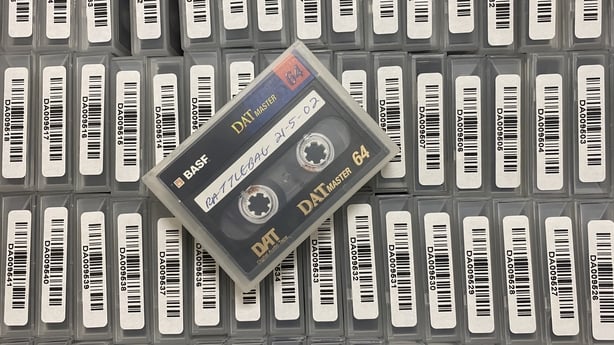Recordings made for RTÉ radio on Digital Audio Tape have been digitised with the assistance of the BAI Archiving Funding Scheme.
An item from the RTÉ television series 'Zero' explains how the technology behind the new cassette format Digital Audio Tape works and speculates on how and where it might be used.
This episode of 'Zero' was broadcast on 29 February 1988. The presenter is Brian Hayes.
Digital Audio Tapes are magnetic tape cassettes that were used to store audio information in a digital recording. DAT uses 4mm magnetic tapes that could hold digital recordings of between 15 minutes and 180 minutes depending on the sample rate.
Sony introduced the compact DAT technology in 1987, producing the tape cassettes and a range of devices for recording and playback. This new system allowed recordings to be made of a digital signal to a compact cassette tape. The technology enabled recordings to be made at sampling rates equal to, higher and lower than a compact disc CD.

The intention for the format may have been to replace the analogue compact audio cassette but DAT was not adopted by the consumer market.
DAT was used in the professional recording and broadcasting sectors as part of the developing digital production systems. In RTÉ DAT was used to record performances of live music and to make a back up of radio productions and live events.
Digital files of this content is preserved and catalogued at RTÉ Archives and is available for research and use in new productions.


























